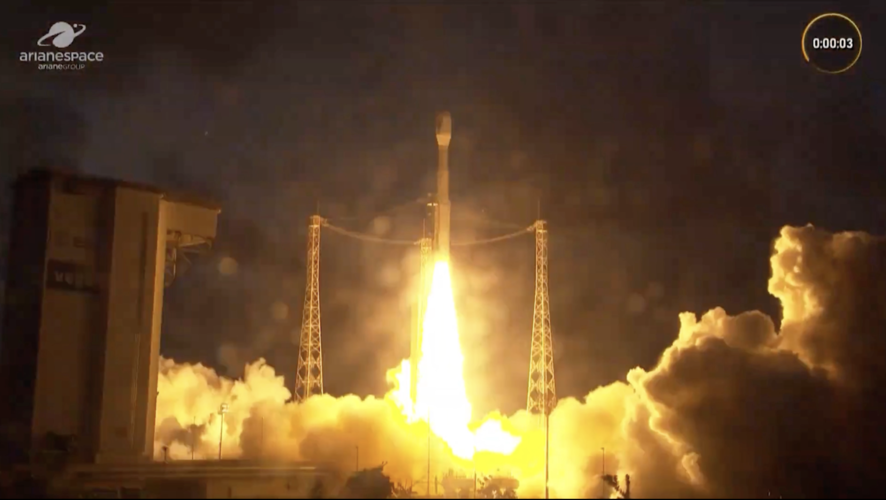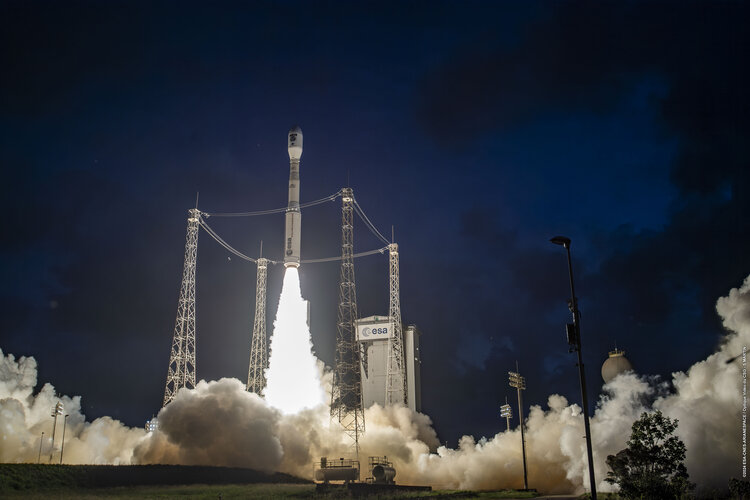
Copernical Team
NASA delays crewed Artemis II launch to April 2026 after heat shield issues
 NASA said Thursday it has pushed back the next two launches in its delay-plagued Artemis moon landing program after studying the causes of unexpected charring to the heat shield of Artemis I in 2022.
NASA Administrator Bill Nelson announced the crewed Artemis II mission has been pushed back to April 2026 from a hoped-for September 2025 launch, while Artemis III - which is to land the f
NASA said Thursday it has pushed back the next two launches in its delay-plagued Artemis moon landing program after studying the causes of unexpected charring to the heat shield of Artemis I in 2022.
NASA Administrator Bill Nelson announced the crewed Artemis II mission has been pushed back to April 2026 from a hoped-for September 2025 launch, while Artemis III - which is to land the f SpaceX reaches milestone with 300th successful booster landing
 SpaceX reached another milestone for the reusability of its first-stage boosters as it launched another round of Starlink satellites from California.
The Wednesday night launch marked the 300th time SpaceX successfully returned the first stage of its Falcon 9 rocket in the company's history, something unheard of before the space company came into existence. Starlink Mission 9-14 left th
SpaceX reached another milestone for the reusability of its first-stage boosters as it launched another round of Starlink satellites from California.
The Wednesday night launch marked the 300th time SpaceX successfully returned the first stage of its Falcon 9 rocket in the company's history, something unheard of before the space company came into existence. Starlink Mission 9-14 left th ESA launches spacecraft that will eventually create artificial solar eclipse
 The European Space Agency said that two spacecraft were launched from India on Thursday designed to form a single ship that will create an artificial solar eclipse while in orbit.
Satellites on the Proba-3 rocket will fly in formation to within millimeters of each other as if they were one giant spacecraft, ESA said. The agency said 14 ESA member states came together in what they hope t
The European Space Agency said that two spacecraft were launched from India on Thursday designed to form a single ship that will create an artificial solar eclipse while in orbit.
Satellites on the Proba-3 rocket will fly in formation to within millimeters of each other as if they were one giant spacecraft, ESA said. The agency said 14 ESA member states came together in what they hope t China launches third batch of 18 communication satellites
 China launched a group of 18 communication satellites from the Taiyuan Satellite Launch Center in Shanxi province on Thursday afternoon, deploying the third batch of space-based assets of the Spacesail Constellation in orbit.
Developed by Shanghai-based satellite company Spacesail, the plate-shaped satellites were carried by a Long March 6A rocket that blasted off at 12:41 pm and soon arri
China launched a group of 18 communication satellites from the Taiyuan Satellite Launch Center in Shanxi province on Thursday afternoon, deploying the third batch of space-based assets of the Spacesail Constellation in orbit.
Developed by Shanghai-based satellite company Spacesail, the plate-shaped satellites were carried by a Long March 6A rocket that blasted off at 12:41 pm and soon arri Europe's troubled Vega-C rocket launches after delays
 Europe's new Vega-C rocket launched Thursday from French Guiana in its first takeoff since a failed flight two years ago, an AFP correspondent said.
After days of delays, the rocket took off without problems, carrying the Sentinel-1C satellite for the European Union's Copernicus Earth observation programme.
It is the first blastoff for the lightweight rocket since December 2022, when it
Europe's new Vega-C rocket launched Thursday from French Guiana in its first takeoff since a failed flight two years ago, an AFP correspondent said.
After days of delays, the rocket took off without problems, carrying the Sentinel-1C satellite for the European Union's Copernicus Earth observation programme.
It is the first blastoff for the lightweight rocket since December 2022, when it Sentinel-1C launches on Vega-C
 Video:
00:02:40
Video:
00:02:40
The third Copernicus Sentinel-1 satellite, Sentinel-1C, has launched aboard a Vega-C rocket, flight VV25, from Europe’s Spaceport in French Guiana. The rocket lifted off on 5 December 2024 at 22:20 CET (18:20 local time).
Sentinel-1C extends the legacy of its predecessors, delivering high-resolution radar imagery to monitor Earth’s changing environment, supporting a diverse range of applications and advance scientific research. Additionally, Sentinel-1C introduces new capabilities for detecting and monitoring maritime traffic.
The launch also marks Vega-C’s ‘return to flight’, a key step in restoring Europe’s independent access to space. Vega-C is the evolution of the Vega family of rockets and delivers increased performance, greater payload volume and improved competitiveness.
Double win for Europe: Sentinel-1C and Vega-C take to the skies

The third Copernicus Sentinel-1 satellite was launched on a Vega-C rocket from Europe’s Spaceport in French Guiana. Sentinel-1C extends the legacy of its predecessors, delivering high-resolution radar imagery to monitor Earth’s changing environment, supporting a diverse range of applications and advancing scientific research. Additionally, Sentinel-1C introduces new capabilities for detecting and monitoring maritime traffic.
The power of two: Proba-3
 Video:
00:02:32
Video:
00:02:32
ESA’s eclipse-making Proba-3 double satellite mission has made it to space! Learn more about Proba-3 from the mission team as they bid farewell to their spacecraft, while ESA's Director General Josef Aschbacher wishes the team the best of luck.
The latest member of ESA’s family of in-orbit demonstration missions, Proba-3 is in fact two spacecraft being launched together, which will perform precise formation flying, accurate to a single millimetre, about the thickness of an average fingernail. To prove their performance, Proba-3 has been devoted to an ambitious scientific goal. The pair will line up precisely with the Sun
India launches European 'artifical eclipse' satellites
 India on Thursday successfully launched into space a pair of European satellites that will create artificial solar eclipses to help scientists catch a rare glimpse of the Sun's mysterious atmosphere.
Scientists broke into rapturous applause at the Sriharikota launch site as the Indian Space Research Organisation (ISRO) chief announced the spacecraft had been ejected as planned.
"The spac
India on Thursday successfully launched into space a pair of European satellites that will create artificial solar eclipses to help scientists catch a rare glimpse of the Sun's mysterious atmosphere.
Scientists broke into rapturous applause at the Sriharikota launch site as the Indian Space Research Organisation (ISRO) chief announced the spacecraft had been ejected as planned.
"The spac FibreCoat raises 20m euro to advance coated fiber technology in space and defense sectors
 FibreCoat, a leading innovator in materials technology, has successfully raised nearly euro 20 million in a Series B funding round. The investment was co-led by NewSpace Capital and Goose Capital, with participation from Nova Saint-Gobain, 212 NexT, Otto Krahn New Business, Convergent Ventures, and TiE.
Founded in Germany in 2020, FibreCoat has developed a pioneering process for coating f
FibreCoat, a leading innovator in materials technology, has successfully raised nearly euro 20 million in a Series B funding round. The investment was co-led by NewSpace Capital and Goose Capital, with participation from Nova Saint-Gobain, 212 NexT, Otto Krahn New Business, Convergent Ventures, and TiE.
Founded in Germany in 2020, FibreCoat has developed a pioneering process for coating f 
